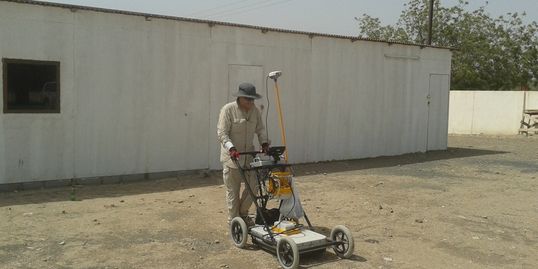
GPR Archaeological Surveys
Ground Penetrating Radar works by sending a radio signal or series of signals into the ground then collect and provide information regarding the ground characteristics by the returning signals. The main advantage of GPR in surveys is that it is an NDT method, i.e neither invasive nor destructive and it is frequently used in areas where preservation, rather than excavation, is of importance in order to avoid disturbance (cemeteries, buildings etc.)

3D Electric Resistivity Tomography
ERT surveys are performed by discharging an electrical current to the ground through electrodes nailed to the ground. The current flows between the electrodes and fans out through the ground in a pattern and intensity dependant on the conductivity of the soils and any stratification or obstacles in the vicinity of the electrodes. Main advantages of ERT against GPR is that ERT penetration is not limited by highly conductive soils, it can be said that these kind of soils are rather beneficial.

Results of 3D Electric Resistivity Tomography
Oman ERT and GPR survey. Results of ERT surveying showing in vertical slices 2 big cavities (graves-burial chambers).


